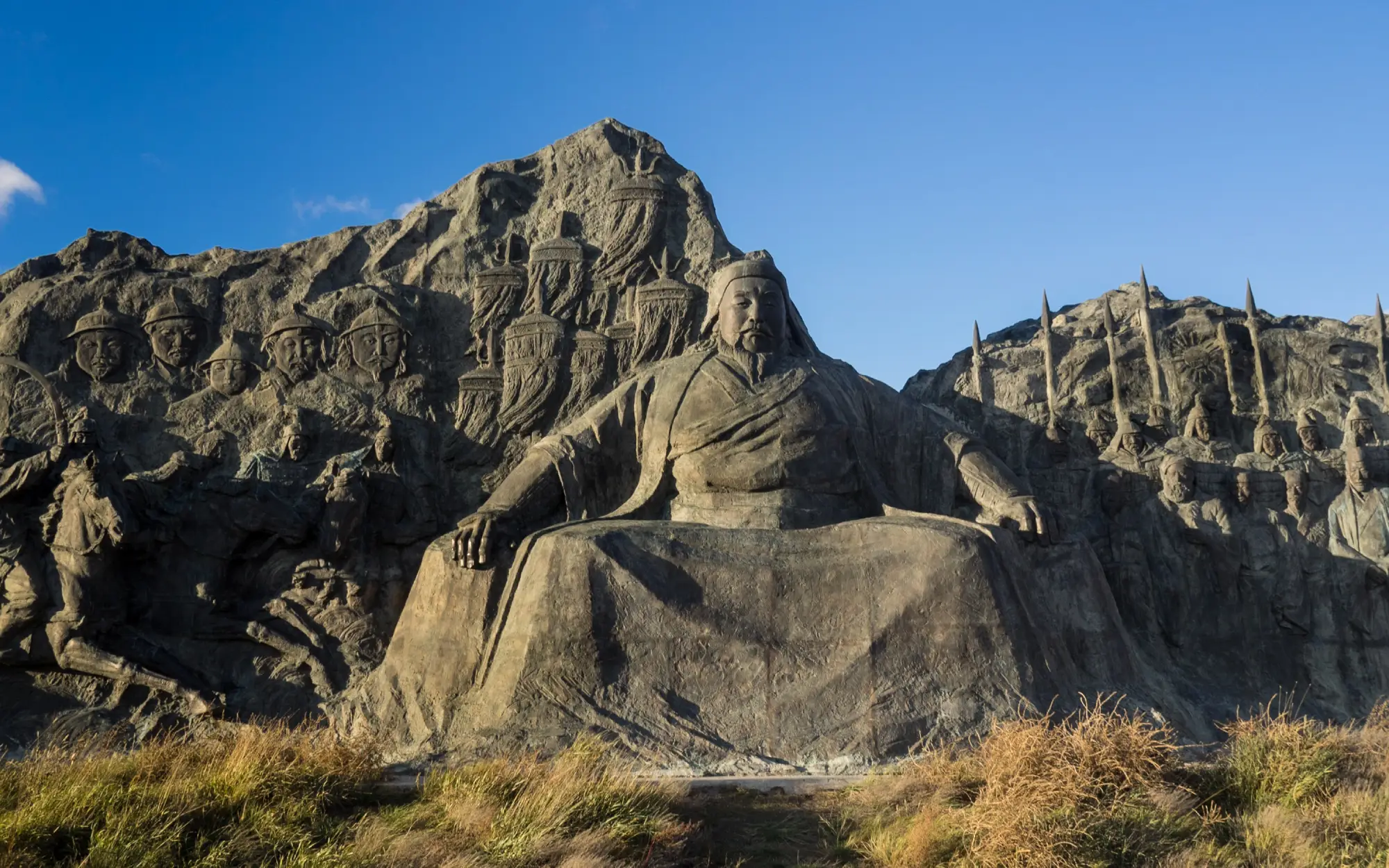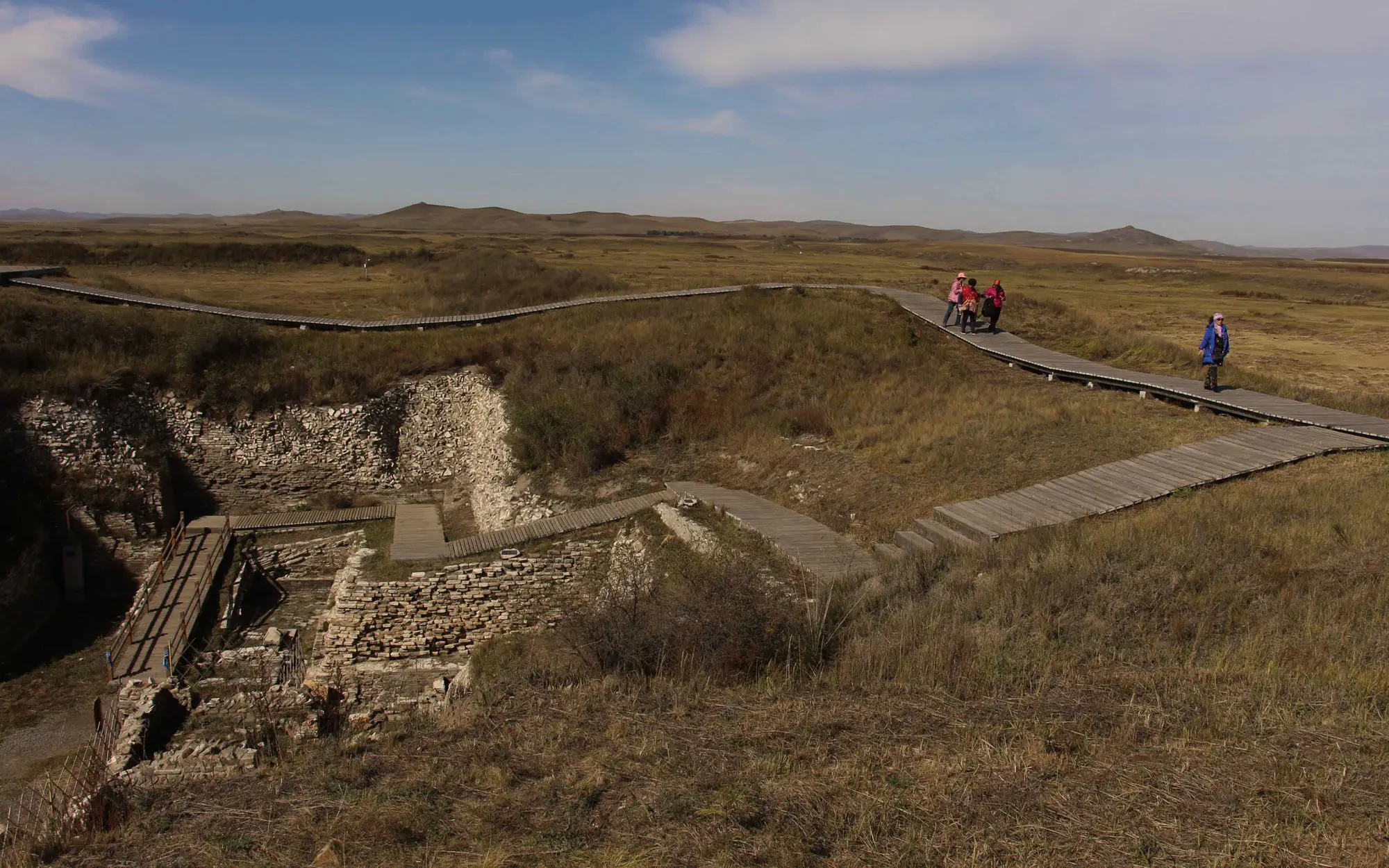
Shangdu, the opulent city of the Mongol Empire
Located in the current province of Inner Mongolia, about 350 km north of Beijing, the archaeological site of Shangdu, corresponds to what was the summer capital of the Mongol Empire of Kublai Khan, of the Yuan dynasty, between the 13th and 14th centuries until its destruction by the Ming dynasty. Today, only a few ruins remain, surrounded by a grassy knoll that was once the city walls. It’s currently in a strong restoration process.
It was designed under a typically Chinese scheme, planned according to traditional feng shui and built around the 1250s. Square in structure, the city was divided into three parts; the Outer City, the Inner City and the Palace, very similar in shape to the Forbidden City in Beijing but smaller in size and extent. It became an important stop on the Silk Road. Its most visible remains are the earthen walls and a circular brick platform at ground level in the center of the inner enclosure. At its height, it’s estimated that more than 100,000 people lived within its walls.
During the reign of Kublai Khan, of the Yuan dynasty, Shangdu would become the summer capital of the Empire, transferring the throne from him to Khanbaliq, present-day Beijing. Shangdu, then, would become a rest residence where to spend the warmest months of the year. Since the archaeological remains do not offer any clues about its opulent past, all knowledge of the city that it was is mainly due to the chronicles that a young Marco Polo would leave about the city on his travels.
It’s widely believed that the Venetian explorer Marco Polo visited Shangdu around 1275, and would later leave the following account:
“And when you have ridden three days from the last mentioned city, between the northeast and the north, you come to a city called Shangdu, which was built by the Khan who now reigns. There is in this place a palace of very fine marble, the rooms of which are all gilded, and painted with figures of men, beasts, and birds, and with a variety of trees and flowers, all executed with such exquisite art that you gaze upon them with delight and amazement.
The mythical city of Shangdu, described and visited by Marco Polo, is an important archaeological site in China from the time of the Mongol Empire.

Remains of ancient Xanadu.
Around this Palace is built a wall, enclosing a compass of 16 miles, and within the Park there are fountains, rivers and streams, and beautiful meadows, with all kinds of wild animals (except those of a ferocious nature), which the Emperor has procured and placed there to supply food for his gyrfalcons and falcons that he keeps there. Of these there are more than 200 gerfalcons alone, not counting the other falcons. The Khan himself goes every week to see his birds, and sometimes rides through the park with a leopard behind him on the back of his horse; and then, if he sees any animal he fancy, he slides his leopard to it to his delight, that when he takes it, it becomes food for the hawks. This is done for fun.
In addition, in a place in the Park where there is a charming forest, there is another Palace made of cane, of which I must give you a description. It’s gilt all over and very elaborately finished on the inside. It stands on gilt and lacquered columns, on each of which is an all-gilt dragon, whose tail is attached to the column while the head supports the architrave, and the claws also extend to the right and left to support the architrave. The roof, like the others, is made of reeds, covered with a varnish so strong and excellent that no rain rots them. These canes have a good 3 palms circumference and 10 to 15 paces in length. There are cut transversely at each node, and then the pieces are split to form two hollow tiles each, and with these the house is roofed; you just have to nail all that cane tile so that the wind does not lift it. In short, the entire Palace is built with these reeds, which I may mention serve a great variety of other useful purposes as well. The construction of the Palace is so thought out that it can be disassembled and reassembled very quickly; and all may be disarmed and removed wherever the Emperor orders. Once erected, it is protected against mishaps by the wind with more than 200 silk ropes.
The Khan dwells in this Park of his, dwelling sometimes in the Marble Palace and sometimes in the Reed Palace for three months of the year, viz. June, July and August; preferring this residence because it is by no means hot; in fact it is a very cool place. When August 28th arrives, it’s split, and the Cane Palace is torn to pieces.”
The city would be destroyed by the Ming dynasty in 1368, and with it the fall of the Mongol Empire. The mythical city of Xanadu would disappear into oblivion, only recorded in the historical chronicles of Mongolia and in the writings of Marco Polo, which would also serve to feed the myth of such opulent city. Later, already in the 17th century, an English cleric named Samuel Purchas published Purchas his Pilgrimes, a book dedicated to different cultures and religions of the world, which contained a brief description of Shangdu based on the writings of Marco Polo. This last book, moreover, would inspire the English romantic poet Samuel Taylor Coleridge, through an opium-induced dream, to write the poem entitled Kubla Khan.
The beautiful palaces, pavilions, government offices, gardens, temples and sanctuaries that remained after the destruction of Xanadu in the 14th century suffered continuous plunder, the materials used in the construction of the surrounding towns and cities, until they were reduced to what is currently visible. A majestic statue of Kublai Khan recalls the milestone that the city of Shangdu meant for the history of China and the Mongol Empire. Since 2012, the historical site was declared a World Heritage Site by UNESCO.
Welcome to China!
Share this Sight with: